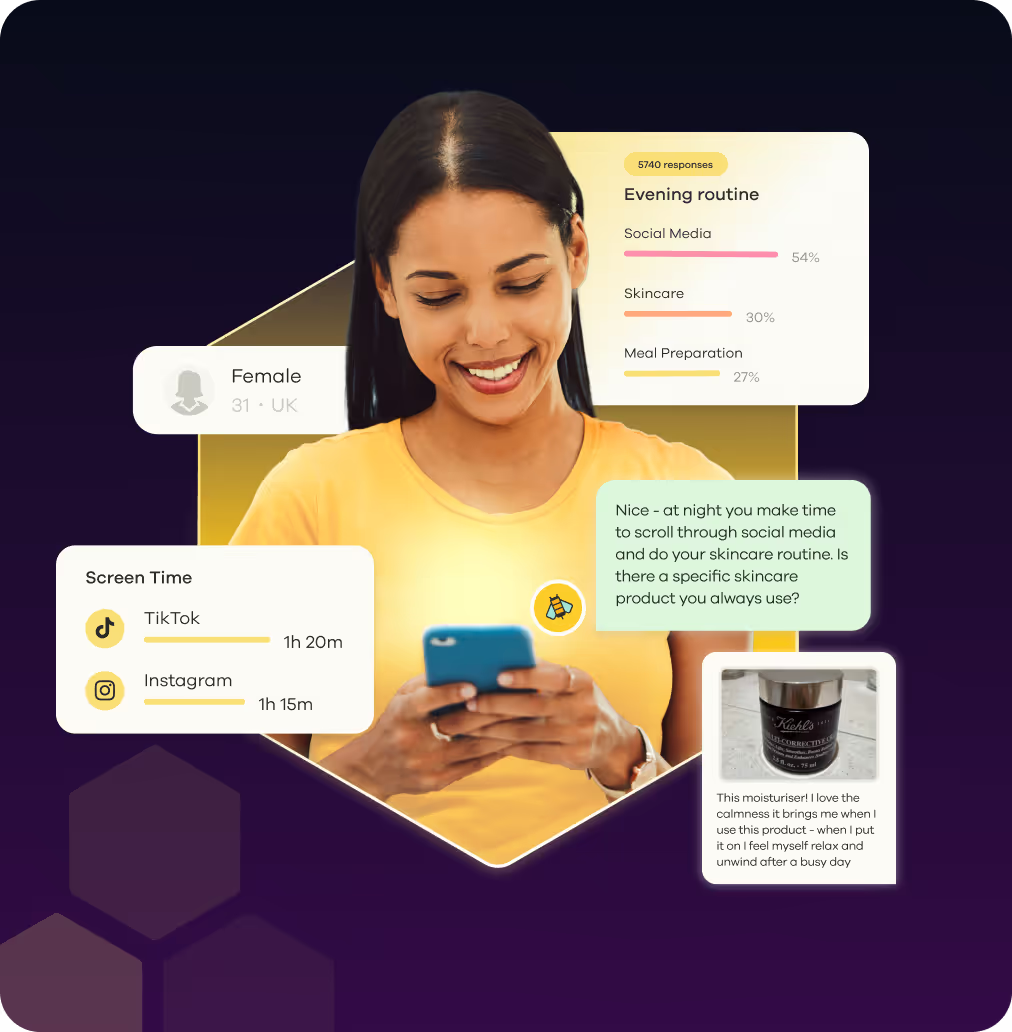In today's landscape, understanding market dynamics and customer behaviours through research is not just beneficial—it's essential.
Market research has long provided a looking glass, through which organisations can learn about audience behaviours, preferences, motivations and perceptions. The knowledge of which has allowed these brands to serve their customers better and grow their bottom line.
Traditionally, organisations would answer their research questions with either a quantitative or qualitative approach.
- Large-scale quantitative surveys offer measurable data, structured outputs and robust sample sizes. They provide the 'what' through numbers and percentages.
- Small-scale qualitative focus groups offer nuanced perspectives, rich insights and real-time interactions. They provide the 'why' through scenarios and verbatims.
Organisations with bigger budgets will sometimes opt for both, but the studies would traditionally be conducted in isolation and the project timelines would likely be as hefty as the cost.
This approach still lives on today, because it’s valuable for lots of research needs. It's particularly useful for projects requiring strict quantitative analysis, or when tackling complex issues that benefit from direct, personal engagement with a select group of participants.
Why then are so many organisations now opting for a more modern approach?
- Speed. Traditional methods are often time-consuming, taking weeks or even months to design, execute, and analyse. This slow turnaround can be a significant disadvantage in a market where conditions and consumer preferences change rapidly.
- Cost. Conducting research through the traditional approach typically requires significant investment in terms of money, personnel, and other resources. This high cost can be prohibitive, especially for insights, marketing and strategic teams experiencing budget limitations due to economic instability over the past few years.
- Rigidity. Traditional market research often separates quantitative and qualitative studies out from one another, meaning researchers need to choose between them, compromising on either rigour or richness. Because numbers bring confidence, it often means quantitative methods are favoured. However, to make the data easy-to-process, these methods rely heavily on pre-set questionnaires, which can restrict the ability to adapt or to explore unexpected findings during the research process.
- Recall bias. Traditional market research methods often rely on participants' ability to recall their experiences and opinions, which can be subject to bias. For example, participants may overestimate or underestimate their behaviour and preferences, leading to inaccurate data. This can be a particularly big problem when the research is conducted after the fact, as memory can fade and become distorted over time.
- Technology. AI solutions are shaking things up by making data more accessible to brands - offering faster, cheaper, and more convenient ways to get insights.
Key takeaway
Traditional market research is robust, but it often leads to painful processes, unanswered questions and strategic compromises. Its limitations highlight the need for more adaptable, cost-effective, and rapid methodologies in certain contexts. As the market evolves, so too must our approach to understanding it, balancing the depth of traditional methods with the agility of modern techniques.
Check out our blog for tips on how to overcome some of these common challenges.





